FINALS AND HOW TO CONDUCT THEM
March 22, 2025
Civilian Marksmanship Program▸The First Shot▸FINALS AND HOW TO CONDUCT THEMBy Gary Anderson, DCME
Finals are now a vital part of shooting—today’s Junior athletes need to learn about finals and how to shoot in them. This article examines how finals became part of Shooting, explains why it is important to introduce Juniors to finals and describes how to conduct finals on modern electronic target ranges.

How Finals Got Started
Prior to the 1990s, all Shooting competitions used a competition format where rifle and pistol competitors fired defined courses of fire on paper targets. Fired targets were taken to scoring or “classification” offices for official scoring. After a 30-to-60-minute scoring interlude, scores were posted on a master scoreboard and were subject to a 30-minute protest time. Only after official scoring was complete could award winners be recognized. The changes that led to today’s electronic targets, finals and immediate official scores were triggered by a royal family visit that took place during the 1984 Los Angeles Olympic Games.
This occurred when the King and Queen of Sweden visited the Prado Tiro Olympic Shooting Range to watch the first day’s Shooting event, 50m Pistol. The King and Queen came to watch their fellow Swede, Ragnar Skanåker, compete. Skanåker had won this event in the 1980 Moscow Olympics and was one of the favorites to win again. ISSF President Olegario Vázquez Raña welcomed the royal couple and took them to the 50m range to watch Skanåker compete. “Preliminary” scores that were being posted by hand on scoreboards behind each shooter indicated that Skanåker and a Chinese athlete were within a point of each other in the contest for the gold medal. The King and Queen asked President Vázquez how long it would be before they knew the official results. He explained that the Classification Jury still had to “officially” score all the targets and that this would take 30 or 40 minutes. After that there would be a 30-minute protest time. A frustrated King then told President Vázquez, “this isn’t a very interesting sport, the Queen and I are going to leave now.”
This incident caused President Vázquez to realize that Shooting had to change its scoring system to one that produced instant medal winners. In his memoir, My Life in Sports,* he said, “I knew I was taking a big risk, but I had to do everything possible to implement the innovations (instant scoring and results). The Shooting Sport would either change or die.” I was a member of the ISSF Executive Committee at that time and worked closely with President Vazquez and ISSF Secretary General Horst Schreiber to draft rules for a Shooting final to conclude every Olympic event. For rifle and pistol events, we settled on having all athletes shoot a longer “qualification” course. Athletes with the top eight scores would advance to a “final” where they would fire ten additional shots. Final scores were added to qualification scores to determine final rankings for the finalists. This was a revolutionary change that went against long-established Shooting traditions. Selling it to athletes, coaches and national federation officials was very difficult, but the changes were adopted and used in the 1986 World Championship and 1988 Olympic Games.
A problem for those first finals was that they were still being shot on paper targets. To obtain immediate results, finalists’ targets had to be scored on the range after each shot, with clumsy hand gauges. Finalists sometimes had to wait two or three minutes between shots. Fortunately, by the time of the 1990 World Championship, the Swiss Sius Ascor Company had developed effective electronic targets that made the instant scoring part of President Vásquez’s dream a reality. Finals were introduced into Shooting amidst massive opposition but after the first years with finals, everyone said this was a change Shooting had to make to survive as an Olympic sport.
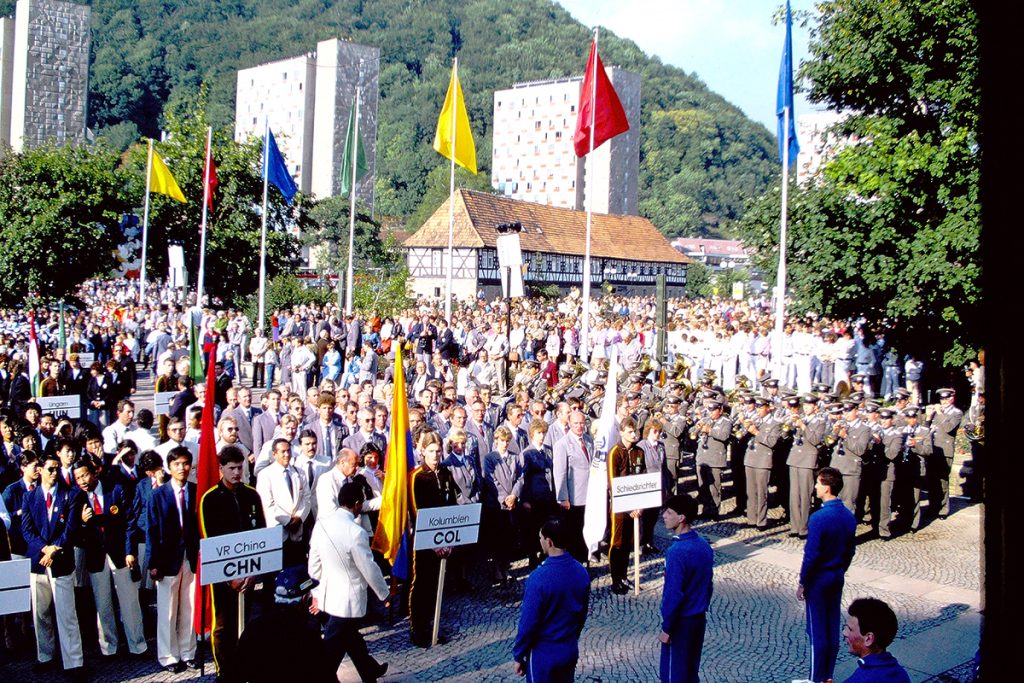
That original finals format, which combined qualification and final scores, prevailed from 1986 through the 2012 London Olympics, but by then IOC (International Olympic Committee) expectations were that all Olympic medals must be decided during separate final round competitions (sport finals had to be separate start-from-zero contests in order to sell them for television productions). President Vázquez and the ISSF Executive Committee decided Shooting must adopt a new finals format where no preliminary scores were carried forward. ISSF Secretary General Franz Schreiber and I then were charged with developing rules for the ISSF’s current start-from-zero finals. These finals also started with the eight top athletes from a qualification course of fire. Finals began with 5-shot series and concluded with single shots where progressive eliminations led to a last shot where the last two finalists decided gold and silver medals. Single position finals had 24 shots; three-position finals had 45 shots. The ISSF Administrative Council approved this new finals format in 2013. It has been used to determine Olympic event medal winners in every international championship since.
Note: The chart (below) summarizes the rules for the different types of finals now being used in Junior competitions.
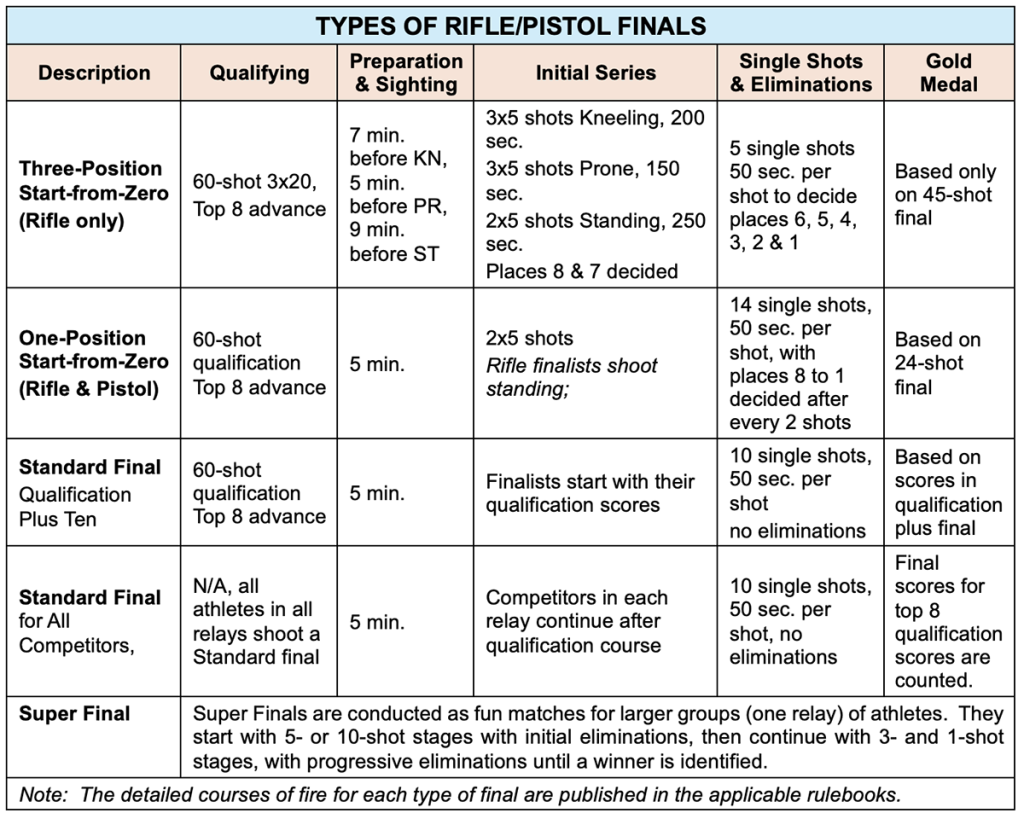
Are Finals Right for Junior Shooters?
A major theme in this article is that finals are such an important part of Shooting today that all Juniors should learn about finals and have opportunities to experience them. Every international and major national championship uses finals to decide individual rankings. Today, the CMP National Matches Smallbore Position, and Air Rifle/Air Pistol Championships, as well as USA Shooting and NCAA Championships, are concluded with finals. Every national-level Junior Three-Position Air Rifle Championship, including the CMP and JROTC Championships, also conclude with finals.
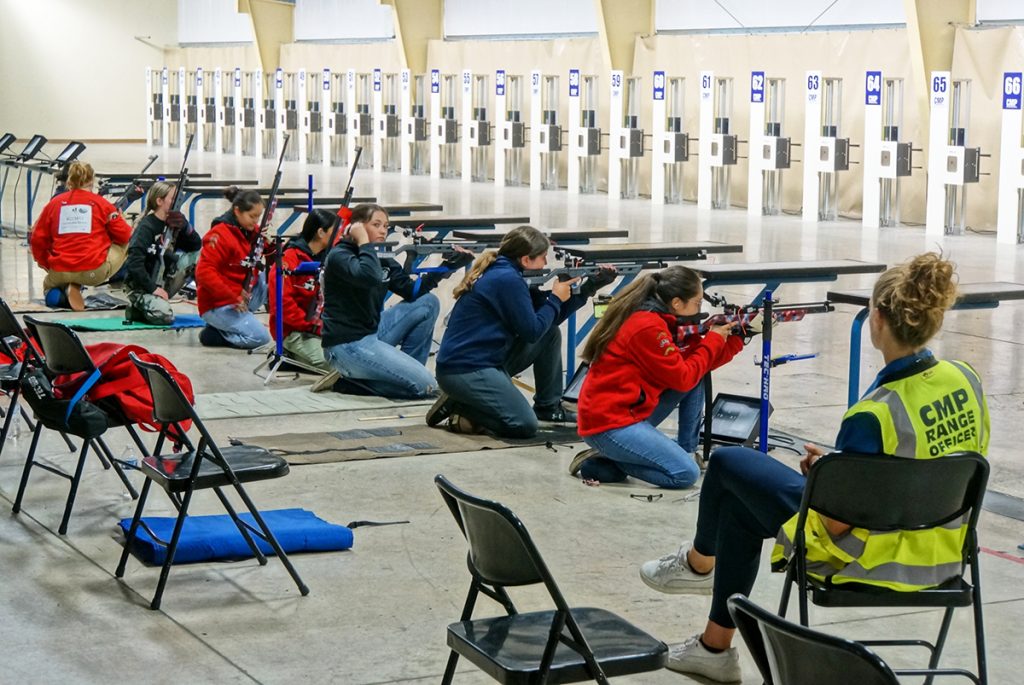
Some might question whether finals are appropriate for junior athletes. Can they handle the extra pressure that being in a final places on them? Our Fall 2024 On the Mark Olympic report reported that nine of the 45 medals (20% of all Shooting medals) in France were won by junior-age athletes. Who can forget how 16-year-old Hyojin Ban of Korea and 17-year-old Yuting Huang of China had to shoot a dramatic tie-breaking shot to decide the gold and silver medals in the Olympic 10m Air Rifle Women event? Most Juniors find the experience of competing in a final exhilarating—shooting in a final can be fun. Juniors all over the world have demonstrated that they like finals and that finals are appropriate for Juniors.
Another factor that is making it possible for more and more shooting programs to conduct finals in competitions and practice is that many more teams and clubs are installing electronic targets (EST) on their ranges. Many match sponsors struggled with trying to conduct finals on paper targets, with little or no success, but EST make finals possible. EST really are necessary for the satisfactory conduct of finals. As of the end of 2024, and thanks mostly to relatively low cost Athena electronic targets, an estimated 170 to 180 10m ranges in the USA have eight or more electronic targets and are capable of hosting start-from-zero finals. That number is expected to grow substantially in the next decade. This means many junior programs now have access to ranges that can be used to conduct finals.
Recommendation: Whenever possible, matches for juniors should include start-from-zero finals to determine individual match awards.
How Should You Prepare for Conducting Finals?
If your Junior program is considering the conduct of finals in the matches you sponsor or even in your team’s training, start by learning about finals. Study finals rules (There are finals rule sections in the ISSF Gen. Tech. Rules, the Three-Position Air Rifle Rules, and the CMP Smallbore and Air Gun rulebooks). Then make sure you have the range, target system and personnel that will fulfill minimum requirements for conducting finals:

Electronic Targets (EST). All indoor EST installations in the USA, whether Athena, Megalink, Sius or KTS, can be used to conduct finals. A finals range must have eight targets. If your EST have any history of malfunctioning, it would be wise to have at least one hospital target available where a finalist with a malfunctioning target can be moved.
EST Software. Electronic target installations must include match management software that supports the finals course of fire. This software must allow you to identify finalists, display their shots and results and show updated rankings after each series or shot in a final. Orion software, which most Junior programs now have, can support finals on ranges with Athena targets. Orion provides an industry standard leaderboard, offers Red X/Green O signals on each target to reinforce STOP and START commands, and displays all Range Officer commands and course of fire timings on competitor monitors. An important reminder: Keep your target system software updated.
Chief Range Officer (CRO). The CRO is the Match Official who conducts the final, usually by calling the final while giving established commands and instructions. The proper conduct of finals should follow a recognized Range Officer Script (see above, Orion software has all finals commands and timings built into their system). Scripts can also be downloaded from the CMP website at https://thecmp.org/youth/air/national-standard-three-position-air-rifle-rules/ (there are scripts for 3-Position Start from Zero Final, One Position Start from Zero Final and a Standard Final). The CRO can function as the Announcer if no one is available for this role. Technical Officer. Having a Technical Officer who knows how to run the EST system is just as important as having a Range Officer who can manage the range. Finals require not just knowing the course of fire, but also how to (best) use the EST software to conduct the course of fire. This person may be a tech-savvy volunteer or student. Learning how to operate finals software is not something to do on the day of the match; practice doing it in advance.
Range Officer(s). For finals in major competitions, there should be one or two Range Officers (one is sufficient) who sit on either end of the firing line. This RO is responsible for responding to any finalist’s problems and for handling any rule violations such as premature loading.
Announcer. When finals are conducted during competitions, an Announcer is needed to give commentary for spectators after every series or shot. Announcer commentary can highlight things like who had the highest score in the previous series, who is in the lead and who is on the bubble for elimination. During position changeovers, they can explain what finalists are doing and why they are firing sighting shots.
Spectator Accommodations. Shooting finals will attract spectators if they are promoted and accommodations are made for spectators. Match Sponsors that want to attract spectators must provide spectator seating and an LCD panel or projection system where the final leaderboard is displayed. LCD panels large enough to facilitate finals displays are relatively inexpensive today. An interesting development is the number of relatively small ranges (8 or 10 firing points) that have installed display systems to show targets and scores during matches and practice sessions.
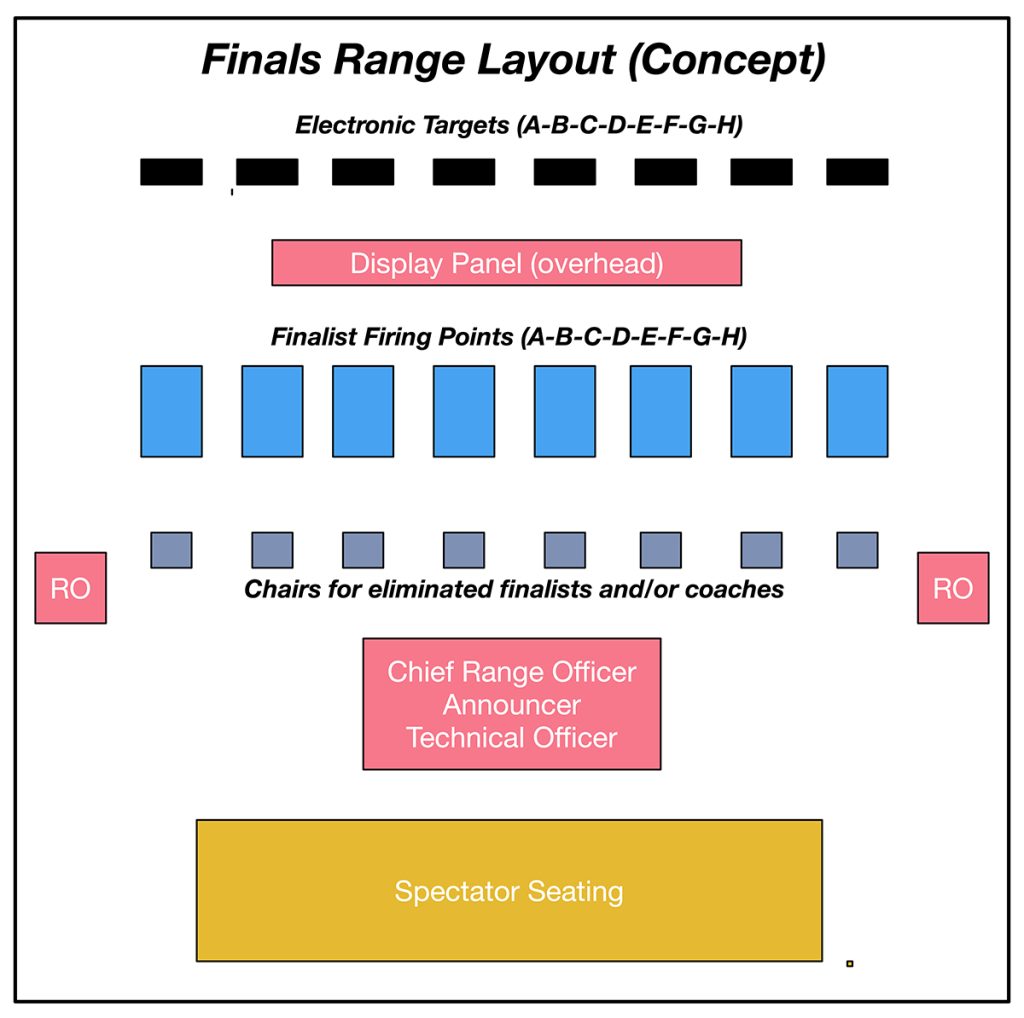
What Should We Do to Conduct Outstanding Finals?
After you have the range, target equipment and personnel needed to conduct finals there are still other aspects of conducting finals that you need to consider:
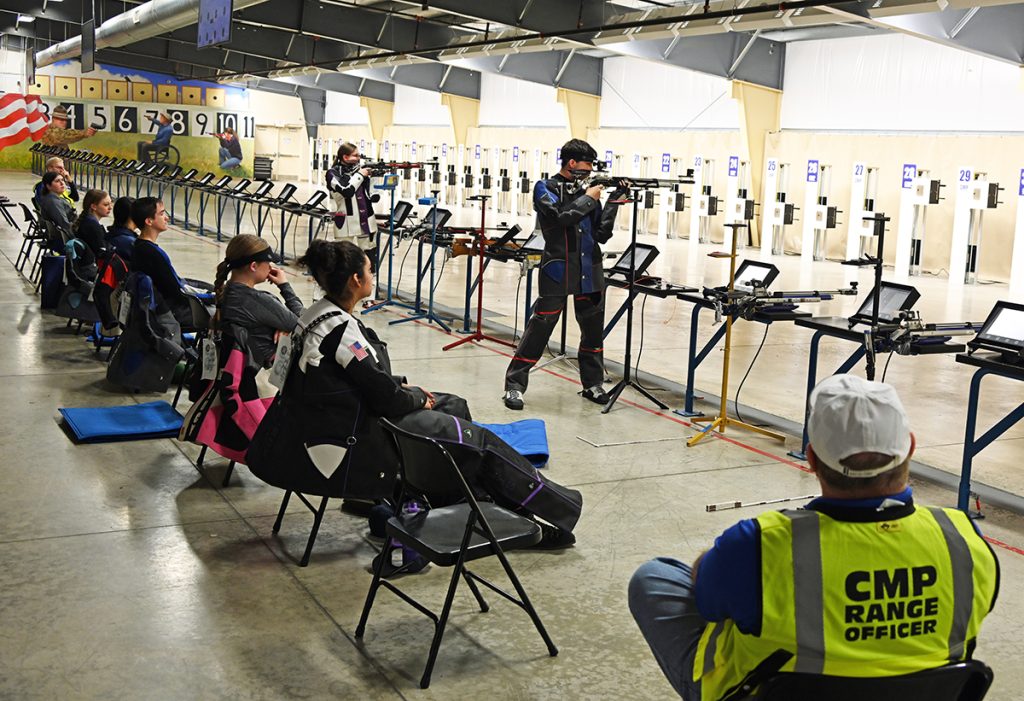
Practice Finals to Train CRO and Announcer. Some of the best advice we can give Match Sponsors that are just getting started with finals, is to practice conducting finals before you ever conduct one in a competition. The Orion/Athena software has a simulation mode that lets the CRO and Announcer practice the final without having athletes shooting. A lot of junior teams and clubs that now have electronic targets also conduct finals during practice sessions to train their athletes in how to shoot finals.
Conducting Finals in Multi-Day Matches. Multi-day matches where competition, especially on small ranges, takes place over two, three or four days make it difficult to conduct finals where every athlete who qualifies is present to shoot the final. There nevertheless are ways to deal with this challenge. Granbury H.S. MCJROTC in Texas, for example, successfully conducts four-day matches that end with a start-from-zero final on the fourth day. They encourage teams with athletes who are likely to qualify for a final to plan to compete on the last day. Athletes from local teams who make the top eight will plan to return if they make the final. Another alternative is to conduct a standard final after every relay. According to the rules (3P10.1.2 a), final scores in these matches are added to the scores of the athletes with the top eight qualification scores. Nevertheless, all match competitors will have had the benefit of shooting a final with 50 sec. single shot time limits.

Scheduling and Promoting Finals. When finals are scheduled, this must be clearly stated in the Match Program. If a competition includes both the precision and sporter categories, then there must be separate finals for each category. The program must also state when the finals are scheduled to begin. The official start time for a final is when the first record series starts. That means finalists need to come to the range in sufficient time to be introduced and complete their preparation and sighting time. Posting an official start time is important because a part of final preparation should be to let people who might be interested in watching the final know about it. Finals can be great spectator experiences, especially when lead changes and elimination duels occur. If you want spectators, you need to promote your final.
Athlete Reporting and Briefing. As soon as qualification firing is complete, the range leaderboard should show the top eight athletes who qualified for the final. Finalists’ names should also be announced. Finalists in start-from-zero finals should be assigned to randomly selected firing points; finalists in Standard Finals are assigned to firing points according to their qualification scores. Identify a reporting room of assembly points for finalists. The CRO or Match Director should prepare a briefing that explains the finals course of fire. There will usually be one or two finalists who are shooting in their first final.
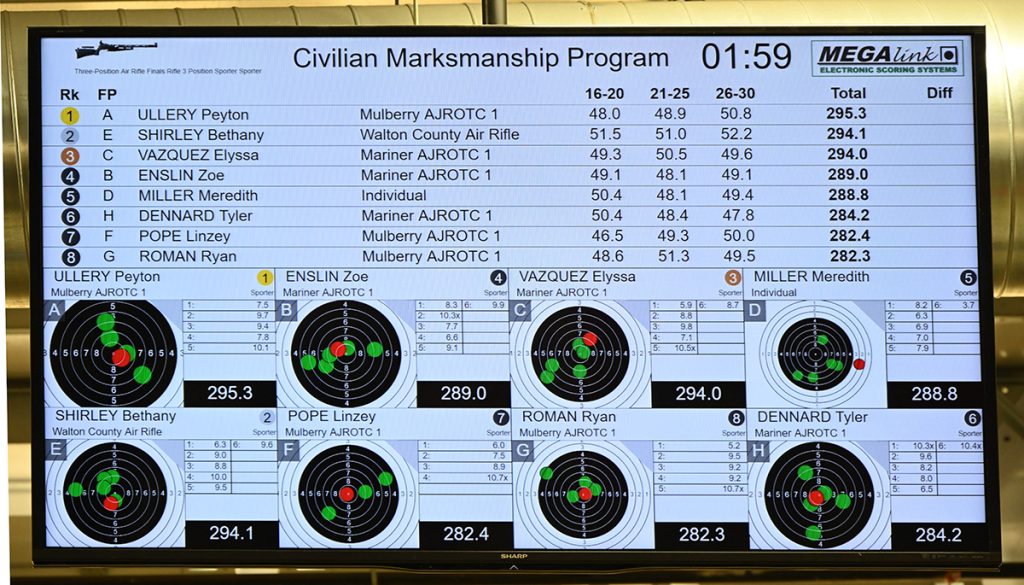
Preparation of Finals Software. While this is taking place, the Technical Officer must prepare the computer software for the final. Athletes’ names must be entered in firing point order and linked to those targets. Be sure to obtain, study and practice the manufacturer’s instructions for how to do this. When finalists arrive at their firing points, they should see their names on the leaderboard and firing point monitors.
Finalist Entry and Introductions. After finalists are briefed on how the final will be conducted, they should be allowed to place their equipment on their firing points. Most major competitions will have finalists return to the reporting room and then call them into the range for introductions. When finalists take their places at their firing points, they should face the audience to be introduced. The Announcer should introduce each finalist by name, and hometown and/or club affiliation. It’s OK to announce their qualifying score that got them into the final.
Preparation and Sighting Time. Every final begins with a short Preparation and Sighting Time. In ISSF finals, finalists are introduced during this time, but that is because TV productions do not begin until just before record firing starts. This five- or seven-minute period is a good time for your Announcer to explain to spectators how the final will be conducted.5-Shot Series. In start-from-zero finals, record firing begins with 5-shot series. Announcer comments after each series should note leaders, leader changes and outstanding series scores. The drama in this phase of a final lies in seeing athletes climb to the top of the leaderboard while others drop to the bottom and face elimination.
Single Shots and Eliminations. Three-position finals begin their progressive eliminations after the second 5-shot standing series when the 7th and 8th place finishers are recognized. Single position finals begin eliminations after the second single shot. The Announcer should recognize and congratulate every athlete as they are eliminated.
Recognition of Medalists. As the single shots come to the last shot, two athletes remain to fire to decide 1st and 2nd places. Some of the most exciting finals occur when that last shot really does determine the winner. As soon as the gold and silver medal winners have congratulated each other, bring the 3rd place bronze medal winner back to the firing line to recognize the three medal winners. Have them pose with their rifles (or pistols) while the Announcer recognizes them, and photos are taken.
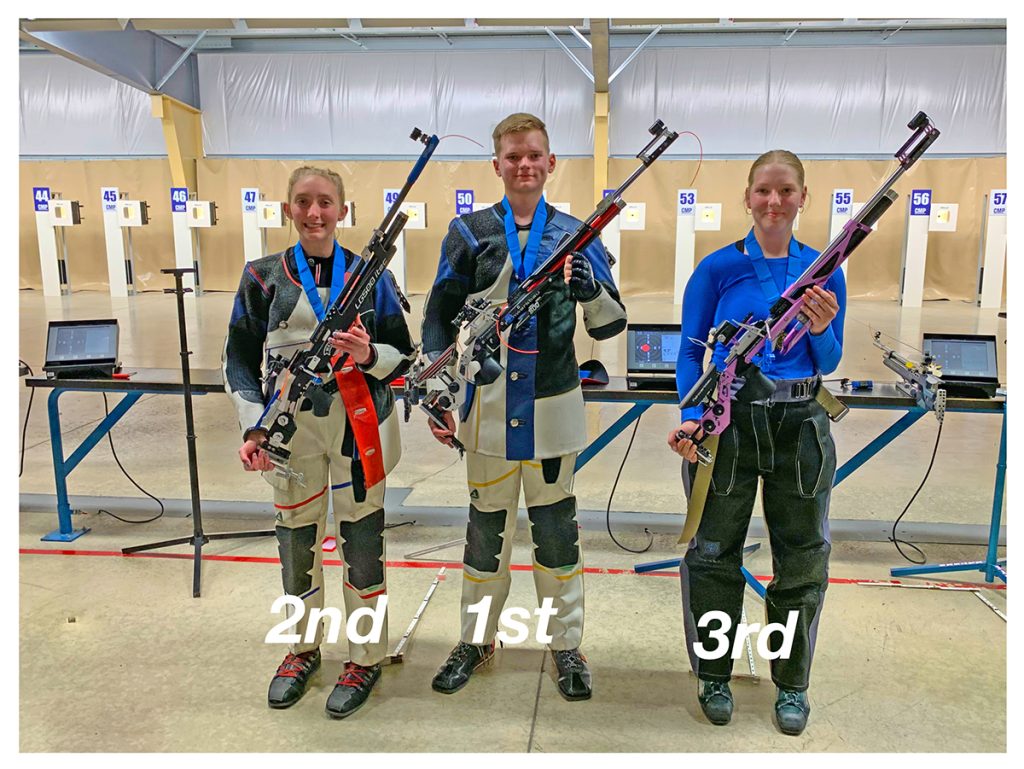
Problems and How to Decide Them. Most finals run smoothly and are concluded without incident. Occasionally, a problem does occur that requires action by the CRO and ROs. To prepare for this possibility, Range and Technical Officers who will conduct finals should study the technical rules that apply to finals to know what the rules for dealing with these situations are (see 3P10.2.9, SB10.2 or AR10.2).
A Vision for the Future. As Junior Shooting competitions continue to grow and develop, we can envision a future where most Junior Shooting ranges have electronic targets and where Match Sponsors are offering Juniors competitions with start-from-zero finals.
* Vázquez Raña, Olegario, My Life in Sports, Oceano Publishing, 2022, pp. 171-173.